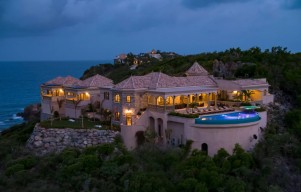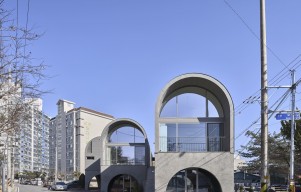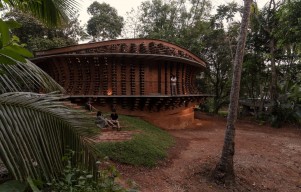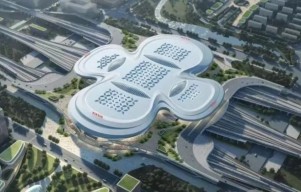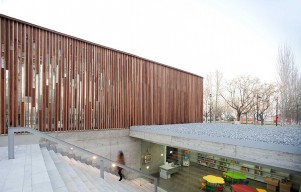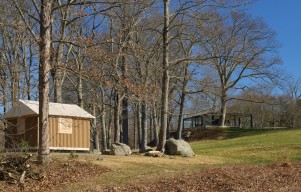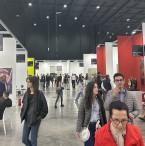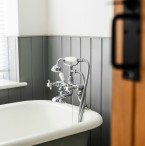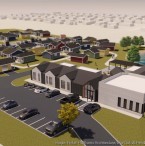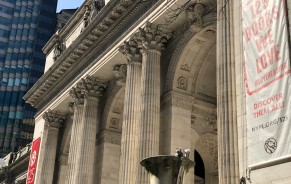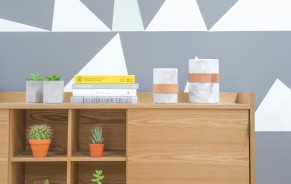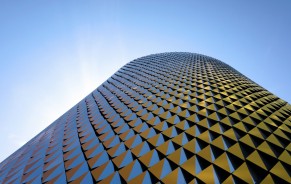Nestled within a forgotten lychee garden near Hanoi, Vietnam, the Đạo Mẫu Museum is a testament to architectural innovation, cultural preservation, and the harmonious integration of tradition into contemporary life. The brainchild of ARB Architects and folk artist Xuân Hinh, this transformative project rejuvenates a 50-year-old orchard into a mystical landscape, celebrating the deep-rooted spiritual traditions of Vietnam. The article delves into the architects' commitment to preserving the essence of the landscape, their creative use of traditional materials, and the profound impact of the Đạo Mẫu Museum on cultural heritage.
Preservation and Reverence
The lychee garden, once home to various fruit trees and bonsai, serves as the canvas for the Đạo Mẫu Museum. The architects draw parallels between the landscape and the Vietnamese reverence for the 'Mother' figure, deeply woven into the nation's spiritual tapestry. The museum's design reflects this commitment to preserving everything "present on the ground," from old trees to houses, fences, and gate pillars. The fusion of traditional architecture and contemporary vision becomes a tribute to Mother Âu Cơ and the symbolic Mother Rivers, integral to Vietnam's cultural identity.
Sustainable Construction and Preservation
The architects' commitment to preservation extends beyond physical structures to the earth beneath our feet, symbolized by the Vietnamese understanding of the earth as a mother. The challenge becomes an opportunity for creative design and sustainable construction, minimizing the relocation of existing trees and creatively reusing construction waste. The result is an architectural dialogue between scattered pine trees, carefully preserved gate pillars, and the resilient lychee garden- a testament to nature's endurance against urbanization.
Also Read: Clemson Landscape Architecture Students Envision Sustainable Solutions for Tarpum Bay Waterfront
Immersive Spiritual Spaces
Recognizing the immersive nature of Đạo Mẫu ceremonies, the architects meticulously design spaces within the museum for spiritual activities and worship. The museum's structure, transformed from an old house, features multi-layered spaces that ensure a serene atmosphere. The play of ambient light filtered through slanted tile roofs creates an ethereal ambiance, blurring the boundaries between old and new, traditional and contemporary design. The architects' understanding of sound, light, and silence contributes to a unique and immersive experience within the museum.
Symbolism of Traditional Clay Tiles
The dominant material in the museum's architecture is traditional clay tiles collected from hundreds of old houses. More than just building material, these tiles symbolize the preservation of the region's cultural fabric. The architects unintentionally become inspirers for preserving cultural values, reimagining the use of tiles for walls instead of roofing. This unintentional role extends to sustainability, as reusing old tiles becomes a symbolic gesture bridging the past and the present. The project becomes a silent witness to changing landscapes and the importance of safeguarding heritage.
Reviving Tradition through Architecture
The architects' personal experiences and deep connection with Vietnamese architecture permeate through their approach. Tradition is not viewed as a relic of the past but as a living element inherent in contemporary life. The use of old tiles from demolished houses reflects a desire to experiment with traditional materials in a new way. The architects unintentionally become a source of inspiration for the revival of cultural practices, employing familiar materials cherished by Vietnamese farmers and embracing sustainable architecture.
Amidst escalating urbanization in Vietnam, the Đạo Mẫu Museum stands as a sanctuary that preserves the transition of green spaces and the cultural heritage of the Red River Delta region. This architectural venture transcends traditional boundaries, becoming a place that gathers and continues the conventional culture of the area. Through repurposing old tiles, the museum breathes new life into ancient beliefs, creating a bridge across generations. It invites visitors to pause, reflect, and marvel at the resilience of heritage in the ever-changing landscape of time.
Related Article: Conservation Architecture Ensures the Timeless Legacy of India's Living Buildings and Cultures
